Nowadays, the word 'thing' is given to any object not important enough to have a name, but the meaning of the word for the Vikings could not be more different.
In the 8th century, a thing was an important meeting, essentially a kind of Norse parliament, where people would gather to settle disputes, decide laws and make other decisions.
Now archaeologists believe they have discovered one of the sites where these meetings happened, on the island of Bute in Scotland.
Viking 'parliament' site unearthed in Scotland: Analysis reveals Norse assemblies were held on the island of Bute
A 'thing' is an ancient meeting place where Vikings would gather
One of these Norse parliament sites has been identified in Bute, Scotland
Some had suggested it could have been prehistoric or a medieval farm site
But excavations revealed samples of a preserved surface dating back to the Viking occupation at the site
By Abigail Beall For Mailonline
10 May 2016
Daily Mail
Nowadays, the word 'thing' is given to any object not important enough to have a name, but the meaning of the word for the Vikings could not be more different.
In the 8th century, a thing was an important meeting, essentially a kind of Norse parliament, where people would gather to settle disputes, decide laws and make other decisions.
Now archaeologists believe they have discovered one of the sites where these meetings happened, on the island of Bute in Scotland.
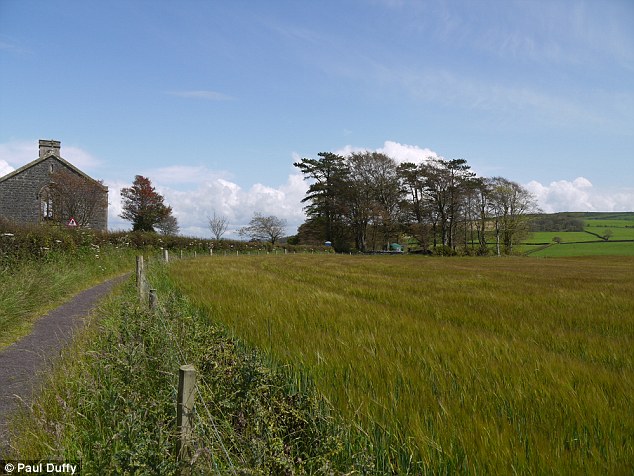
Findings presented at the Scottish Place-Name Society annual conference this week suggested an area on Bute (pictured) is likely to have been the site of one of these 'things' in the 8th and 9th centuries
Cnoc An Rath has been listed as an important archaeological monument since the 1950s, but the significance of the area has been unclear for decades.
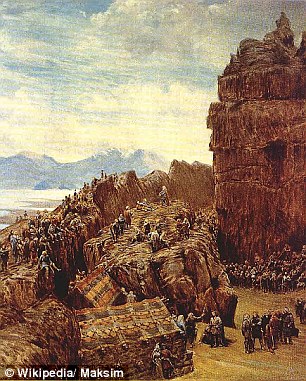
A painting showing a romanticised view of the 11th century Viking parliament in session
Some had suggested it could have been a prehistoric or medieval farm site.
But new findings, presented at the Scottish Place-Name Society annual conference this week, revealed it is likely to have been an important assembly places.
'Although the excavations revealed the site had been heavily disturbed in the 19th century, the results of the carbon dating programme have allowed us to understand that human activity was occurring at the site between the 8th and late 9th century,' archaeologist Dr Paul Duffy, who runs Brandanii Archaeology and Heritage Consultancy told MailOnline.
He said this was 'a time we know historically marks the very end of the Dalriadic power in the area and the start of the period when Vikings were active on Bute and around the Argyll coast'.
A series of excavations revealed samples of a preserved surface which, when analysed through radio-carbon dating, correspond to the time when Vikings were active around the Argyll coast.
'The dates strengthen the hypothesis developed through the place name evidence that the original name for the site indicates a "ting" or "thing" site, in other words a Viking assembly place,' Dr Duffy told MailOnline.
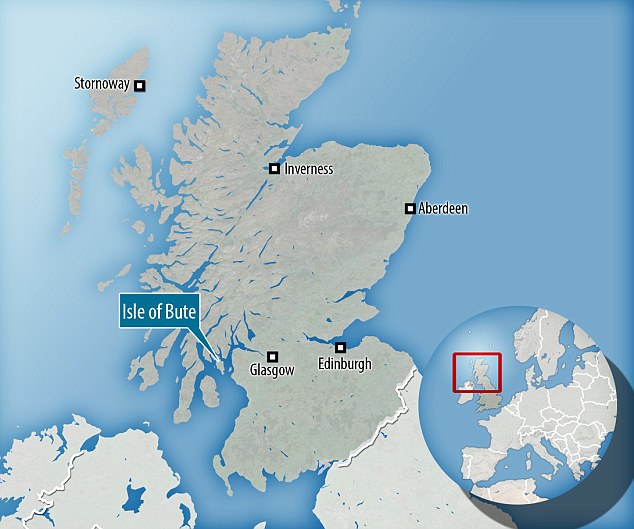
Now archaeologists think they have discovered one of the sites where Norse assemblies happened, on the island of Bute in Scotland (pictured). A series of excavations revealed samples of a preserved surface which, when analysed through radio-carbon dating, correspond to the time when Vikings were active on the coast
'Combined with other evidence proposed by academic examination of historical documents, this may have significant impact on understandings of what was happening on Bute at the time, and the role of the island in the wider Viking world in the 9th century.'
The dates identified corresponded with the end of the period of the kingdom of Dalriada and the start of Viking settlement on Bute.
Duffy said Bute has been suggested as a possible location for the headquarters of the Gall-Gaidheil, or 'Foreign Gaels'.
These Norse-Gael people dominated much of the Irish Sea region, including western Scotland, for a part of the middle Ages and are believed to have offered support to various high Kings of Ireland in battles.
According to the Scottish Herald, Dr Duffy said at the conference: 'We have got a very unusual and definite historical evidence which puts Bute in the Gall-Gaidheil territory, and possibly quite an important place in the Gall-Gaidheil territory.
'What we have now is another brick in the evidential wall which suggests there is an assembly site on Bute.'
He also raised the possibility the leader of the Gall-Gaidheil at that time, Ketill Flatnose, could be linked to the site.
'If you have got people coming in Viking times to the islands for laws to be dispensed and for justice to be handed out, then there is obviously someone that has got to be doing that dispensing of justice and making of laws - and that would be somebody who was quite powerful.'
WHO WAS KETILL FLATNOSE?
Ketill Björnsson, nicknamed Flatnose, was a Norse King of the Isles of the 9th century.
He moved from Norway to the Hebrides sometime in the 9th century.
There he went into Ireland and back into Norway, something the Norwegians would later punish him for.
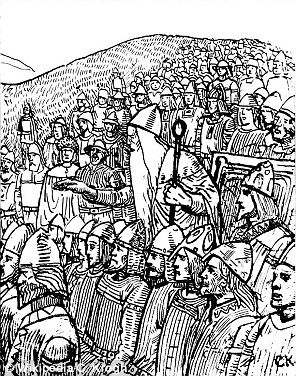
Ketill Flatnose, showing the power of his office to the King of Sweden at Gamla Uppsala, 1018
WHAT'S IN A NAME?
Gilbert Markus, a Celtic and Gaelic researcher at Glasgow University who carried out the study of place-names on Bute, said the name Cnoc an Rath – Gaelic for hill of the fort – may be recent.
He identified nearby medieval farm names dating back to the 14th century, which are thought to have included the Norse word 'thing'.
'That suggested to me there might be a "thing" in the area,' he said. 'The most obvious site for that is the mound just below the farm, which is now called Cnoc An Rath.'
Dr Barbara Crawford from St Andrews University had previously suggested it could be a 'thing' site based on geographical location.
She said the new research on dates added to 'evidence building up' that it was a thing site.
'This is how historians have to go about studying these Norse settlements areas in this period, because the historical evidence is so thin and in many areas it just doesn't exist at all in the Viking period,' Dr Crawford said.
'One has to use place-names and archaeology and general geographical settlement principles to build up the pattern of what the Viking settlement might have been like.'
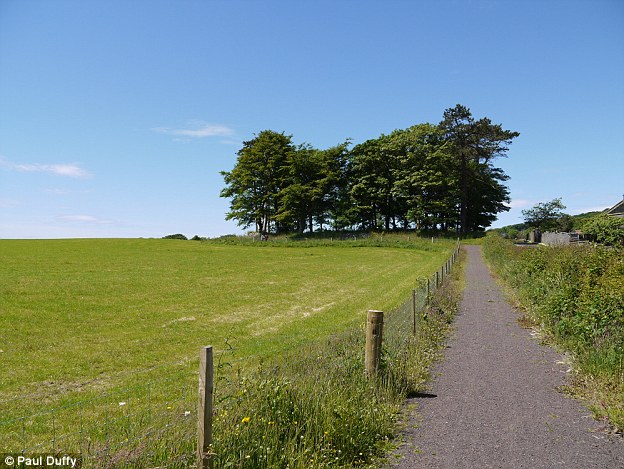
Cnoc An Rath, Bute (pictured) has been listed as an important archaeological monument since the 1950s, but the significance of the area has been unclear for decades. Some had suggested it could have been a prehistoric or a medieval farm site
Read more: Viking 'parliament' site unearthed in Scotland | Daily Mail Online
In the 8th century, a thing was an important meeting, essentially a kind of Norse parliament, where people would gather to settle disputes, decide laws and make other decisions.
Now archaeologists believe they have discovered one of the sites where these meetings happened, on the island of Bute in Scotland.
Viking 'parliament' site unearthed in Scotland: Analysis reveals Norse assemblies were held on the island of Bute
A 'thing' is an ancient meeting place where Vikings would gather
One of these Norse parliament sites has been identified in Bute, Scotland
Some had suggested it could have been prehistoric or a medieval farm site
But excavations revealed samples of a preserved surface dating back to the Viking occupation at the site
By Abigail Beall For Mailonline
10 May 2016
Daily Mail
Nowadays, the word 'thing' is given to any object not important enough to have a name, but the meaning of the word for the Vikings could not be more different.
In the 8th century, a thing was an important meeting, essentially a kind of Norse parliament, where people would gather to settle disputes, decide laws and make other decisions.
Now archaeologists believe they have discovered one of the sites where these meetings happened, on the island of Bute in Scotland.

Findings presented at the Scottish Place-Name Society annual conference this week suggested an area on Bute (pictured) is likely to have been the site of one of these 'things' in the 8th and 9th centuries
Cnoc An Rath has been listed as an important archaeological monument since the 1950s, but the significance of the area has been unclear for decades.

A painting showing a romanticised view of the 11th century Viking parliament in session
Some had suggested it could have been a prehistoric or medieval farm site.
But new findings, presented at the Scottish Place-Name Society annual conference this week, revealed it is likely to have been an important assembly places.
'Although the excavations revealed the site had been heavily disturbed in the 19th century, the results of the carbon dating programme have allowed us to understand that human activity was occurring at the site between the 8th and late 9th century,' archaeologist Dr Paul Duffy, who runs Brandanii Archaeology and Heritage Consultancy told MailOnline.
He said this was 'a time we know historically marks the very end of the Dalriadic power in the area and the start of the period when Vikings were active on Bute and around the Argyll coast'.
A series of excavations revealed samples of a preserved surface which, when analysed through radio-carbon dating, correspond to the time when Vikings were active around the Argyll coast.
'The dates strengthen the hypothesis developed through the place name evidence that the original name for the site indicates a "ting" or "thing" site, in other words a Viking assembly place,' Dr Duffy told MailOnline.

Now archaeologists think they have discovered one of the sites where Norse assemblies happened, on the island of Bute in Scotland (pictured). A series of excavations revealed samples of a preserved surface which, when analysed through radio-carbon dating, correspond to the time when Vikings were active on the coast
'Combined with other evidence proposed by academic examination of historical documents, this may have significant impact on understandings of what was happening on Bute at the time, and the role of the island in the wider Viking world in the 9th century.'
The dates identified corresponded with the end of the period of the kingdom of Dalriada and the start of Viking settlement on Bute.
Duffy said Bute has been suggested as a possible location for the headquarters of the Gall-Gaidheil, or 'Foreign Gaels'.
These Norse-Gael people dominated much of the Irish Sea region, including western Scotland, for a part of the middle Ages and are believed to have offered support to various high Kings of Ireland in battles.
According to the Scottish Herald, Dr Duffy said at the conference: 'We have got a very unusual and definite historical evidence which puts Bute in the Gall-Gaidheil territory, and possibly quite an important place in the Gall-Gaidheil territory.
'What we have now is another brick in the evidential wall which suggests there is an assembly site on Bute.'
He also raised the possibility the leader of the Gall-Gaidheil at that time, Ketill Flatnose, could be linked to the site.
'If you have got people coming in Viking times to the islands for laws to be dispensed and for justice to be handed out, then there is obviously someone that has got to be doing that dispensing of justice and making of laws - and that would be somebody who was quite powerful.'
WHO WAS KETILL FLATNOSE?
Ketill Björnsson, nicknamed Flatnose, was a Norse King of the Isles of the 9th century.
He moved from Norway to the Hebrides sometime in the 9th century.
There he went into Ireland and back into Norway, something the Norwegians would later punish him for.

Ketill Flatnose, showing the power of his office to the King of Sweden at Gamla Uppsala, 1018
WHAT'S IN A NAME?
Gilbert Markus, a Celtic and Gaelic researcher at Glasgow University who carried out the study of place-names on Bute, said the name Cnoc an Rath – Gaelic for hill of the fort – may be recent.
He identified nearby medieval farm names dating back to the 14th century, which are thought to have included the Norse word 'thing'.
'That suggested to me there might be a "thing" in the area,' he said. 'The most obvious site for that is the mound just below the farm, which is now called Cnoc An Rath.'
Dr Barbara Crawford from St Andrews University had previously suggested it could be a 'thing' site based on geographical location.
She said the new research on dates added to 'evidence building up' that it was a thing site.
'This is how historians have to go about studying these Norse settlements areas in this period, because the historical evidence is so thin and in many areas it just doesn't exist at all in the Viking period,' Dr Crawford said.
'One has to use place-names and archaeology and general geographical settlement principles to build up the pattern of what the Viking settlement might have been like.'

Cnoc An Rath, Bute (pictured) has been listed as an important archaeological monument since the 1950s, but the significance of the area has been unclear for decades. Some had suggested it could have been a prehistoric or a medieval farm site
Read more: Viking 'parliament' site unearthed in Scotland | Daily Mail Online
Follow us: @MailOnline on Twitter | DailyMail on Facebook
Last edited: